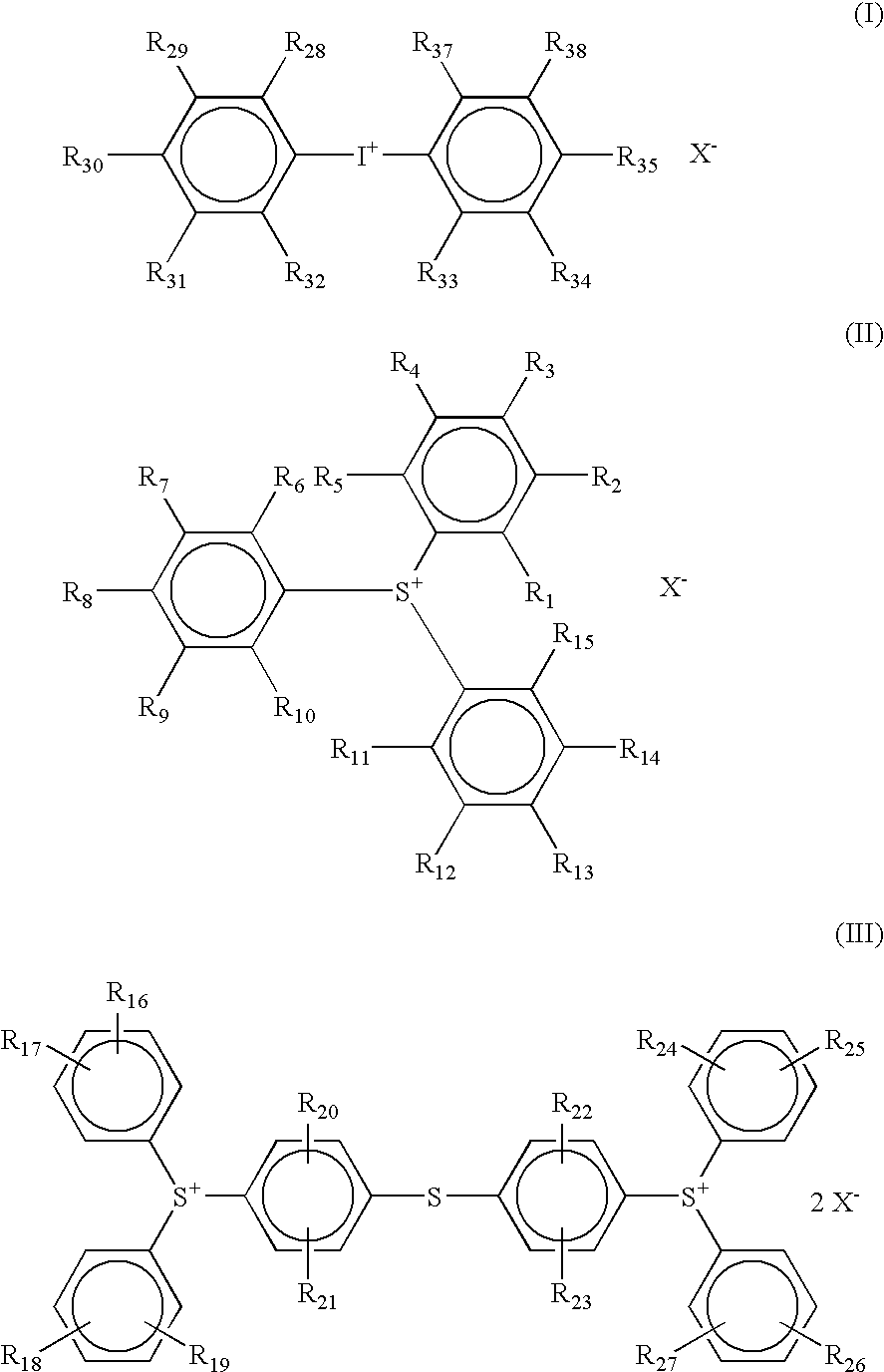Positive photosensitive composition
a composition and photosensitive technology, applied in the field of positive photosensitive compositions, can solve the problems of low affinity for aqueous developers, poor absorption, high photosensitivity, etc., and achieve the effect of improving the exposure margin in photolithography and high resolution
- Summary
- Abstract
- Description
- Claims
- Application Information
AI Technical Summary
Benefits of technology
Problems solved by technology
Method used
Image
Examples
synthesis example 1
Synthesis of Sulfonic Acid Generator as Component (A)
[0359] To 20 g of bis (t-butylphenyl)iodonium iodide were added 500 ml of methanol and 8.9 g of silver oxide (I). This admixture was placed in a dark room and stirred for 4 hours at room temperature. The resulting reaction solution was filtered sequentially with filter paper and a 0.1-μm filter, thereby removing the silver compound. The filtrate was mixed with 12.1 g of per fluoroethoxyethanesulfonic acid, and concentrated. The thus obtained oily matter was dissolved in 1-liter of ethyl acetate, and washed twice with a 2% aqueous solution of tetramethylammonium hydroxide and further twice with distilled water. The organic layer was dried and concentrated to yield 48 g of Compound I-1.
300 MHz 1H-NMR (CDCl3)
δ 0.6 (t, 6H), δ 1.15 (s, 12H), δ1,55 (q, 4H), δ 7.3 (d, 4H), δ 7.8 (d, 4H)
[0360] Compounds (I-2) to (I-9) were also synthesized using the corresponding sulfonium iodides respectively in accordance with the same method as de...
synthesis example 2
Synthesis of Resin as Component (B)
[0366] p-Hydroxystyrene (VP-8000, produced by Nippon Soda Co., Ltd.) in an amount of 70 g was dissolved in 320 g of propylene glycol monomethyl ether acetate (PGMEA) with heating, dehydrated by vacuum distillation, and then cooled to 25° C. To this solution, 0.35 g of pyridinium p-toluenesulfonate and 22.4 g of cyclohexane ethanol were added, and further 17.5 g of t-butyl vinyl ether was added at a slow speed. In the resulting mixture, reaction was run for 5 hours at 20° C. Thereafter, the reaction solution was admixed with 0.28 g of triethylamine and 320 ml of ethyl acetate, and washed with 150 ml each of distilled water for three times. Therefrom, the solvent was distilled away, and the residue was concentrated. The thus obtained oil was dissolved in 100 ml of acetone, and poured slowly into 2 liter of distilled water. As a result, a powdery matter separated out. This powdery matter was filtered off and dried to yield 54 g of the desired resin. ...
PUM
| Property | Measurement | Unit |
|---|---|---|
| wavelengths | aaaaa | aaaaa |
| wavelengths | aaaaa | aaaaa |
| thickness | aaaaa | aaaaa |
Abstract
Description
Claims
Application Information
 Login to View More
Login to View More - R&D
- Intellectual Property
- Life Sciences
- Materials
- Tech Scout
- Unparalleled Data Quality
- Higher Quality Content
- 60% Fewer Hallucinations
Browse by: Latest US Patents, China's latest patents, Technical Efficacy Thesaurus, Application Domain, Technology Topic, Popular Technical Reports.
© 2025 PatSnap. All rights reserved.Legal|Privacy policy|Modern Slavery Act Transparency Statement|Sitemap|About US| Contact US: help@patsnap.com



